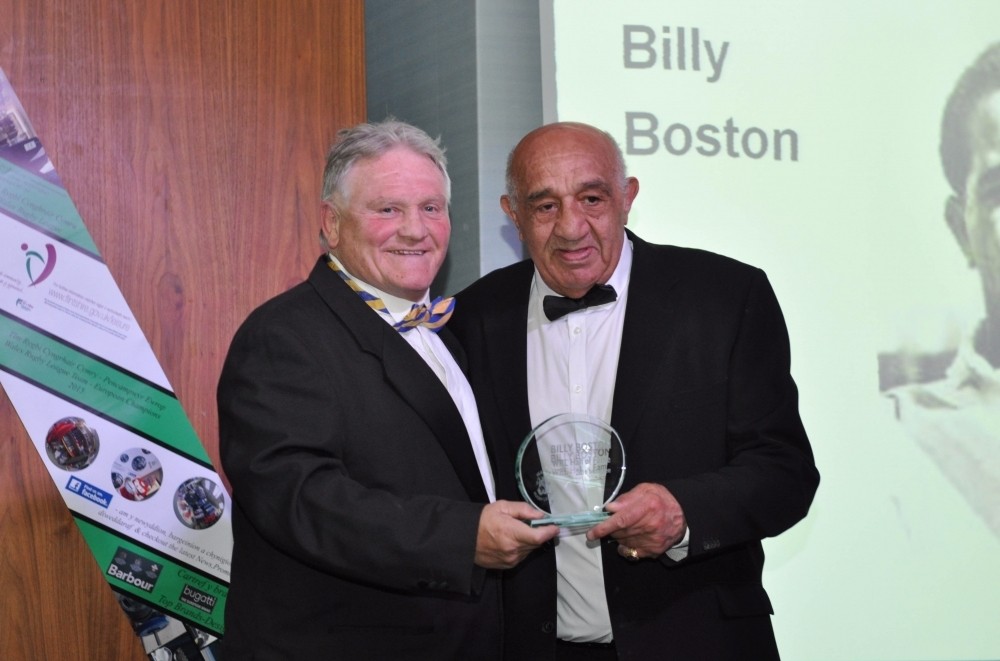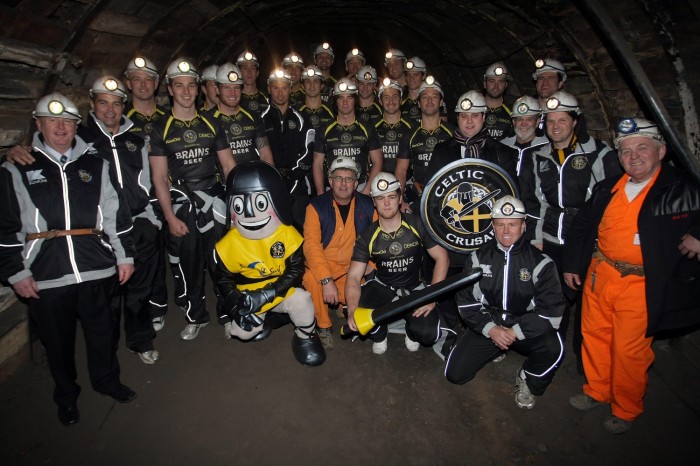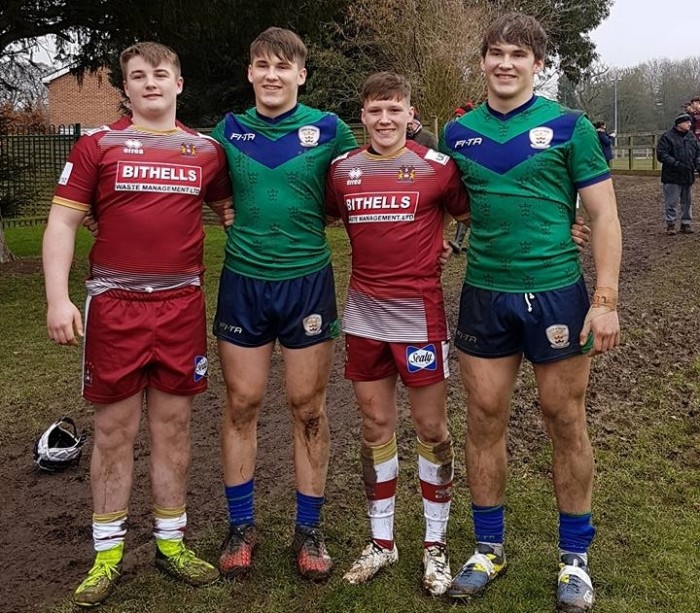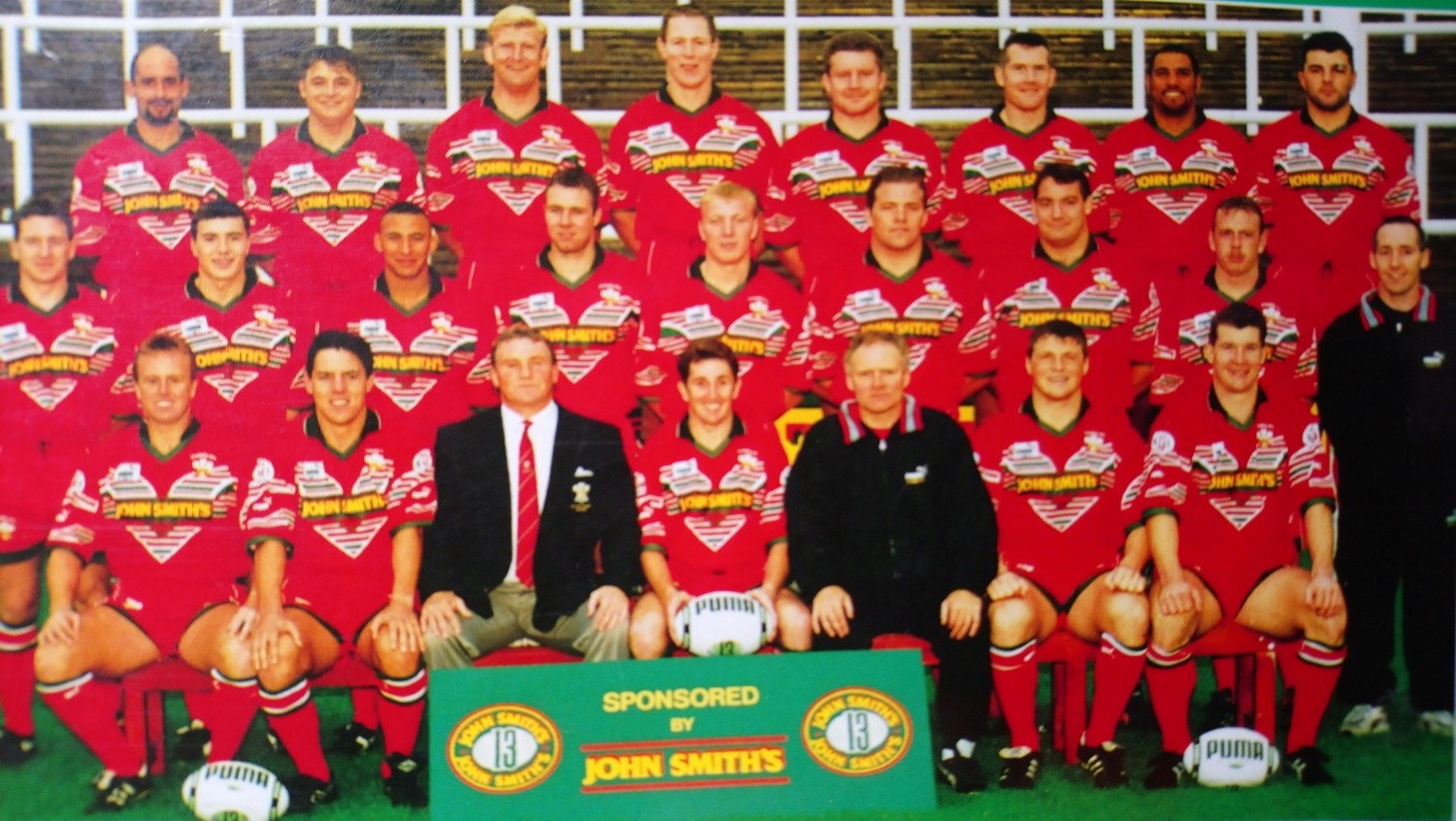Wales Rugby League’s head of communications and historian, Ian Golden, reviews Carolyn Hitt’s BBC documentary and explains why he felt a few more minutes screentime would have added to the story.
So who watched last night’s BBC2 documentary “Codebreakers”?
If you didn’t, you missed a treat, but don’t worry, you can still see it on the BBC website for a limited time here.
Carolyn Hitt’s fascinating show told the story of why hundreds of Welsh rugby union players, from the late 1800s up until 1995, went north to play rugby league. As you’ll find out, most went for money, some went because they believed they wouldn’t get into the Wales rugby union side due to their colour, whilst others went due to being ostracized for another reason, perhaps because of violent behaviour on the field.
Ahead of Sunday’s @BBCWales documentary ‘The Rugby Codebreakers’, here’s my short social history of Welsh rugby league players in the 1920s and 1930s: https://t.co/IDL10V9IFL – tune in to BBC2 Wales (Sky 971/Freesat 971) Sunday 7pm: full detaills at https://t.co/COrfAa9Jwx
— Tony Collins (@collinstony) March 7, 2018
Even if you think you know it all about the “great split” in 1895 and why there are two codes of rugby, I’m betting you probably don’t. You’ll need to watch. I was fascinated by Professor Tony Collins’ statement that rugby union in Wales wasn’t a working class game, that it was a cross class game and played by people from all different backgrounds, which is one, but not all, of the reasons why Wales didn’t join up with the Northern Union over a hundred years ago. “The Welsh Rugby Union pretended not to pay their players and the English Rugby Union pretended to believe them”.
This documentary features interviews with club historians – experts on the game – as well as relatives of some of the original Welshmen who went north, as well as some of those who played both codes from the 1950s up to the 1990s.
Probably around a thousand players “went north” during the period mentioned but not all of them played for Wales, in either code.
Hitt points out that when Wales were poor in rugby union, they were successful in rugby league and naturally focusses on the late 1930s and early 1990s where the 13-man game was king in Wales and shows a lot of memorable footage from the latter, some occasions that I personally was at and remember well, and anyone aged in their early 30s or older will probably also have great memories of that time. It’s claimed that our success coincides with times that industry was at its lowest in Wales (e.g. the 1930s depression and 1980s pit closures).

However Billy Boston, arguably one of the best players ever to have picked up a rugby ball, played many times for Great Britain but didn’t ever win a full Welsh cap. It was colour that allegedly kept him out of the Welsh RU side and with industry booming in the 1950s and 1960s, there was a lack of Welshmen in rugby league, so a side was only formed twice during Boston’s career and he was injured for both. Just a game for Wales against “France B”, played at the same time that the full French side toured Australia, was one of the only times he swapped the cherry and white of Wigan for the red of Wales (he also played matches for Wales against St Helens on a three match tour of South Wales). He was awarded a cap for that by Wales Rugby League in 2016.
In total, we believe there have been 102 players who have played for Wales in two or more ballsports. These are split into five, perhaps six groups.
First, you have the 94 men’s players who have heritage numbers for Wales in both rugby union and rugby league. That’s those who have won a full cap for both countries.
But that doesn’t even tell the full story. A total of 91 of them “went north” from 1908, when the first rugby league international was played, up to 1995, when rugby union went openly professional.
The remaining three were Gareth Thomas, the final codebreaker; and then in an interesting twist, there was Anthony Sullivan and Iestyn Harris, two Welsh Rugby League players, a son and grandson respectively of Welsh internationals from yesteryear, “going south” and playing rugby union.
Then we have four of our international players who were awarded rugby union caps posthumously. Elwyn Gwyther, Glyn Turner, Brian Butler and Stuart Ferguson. Gwyther faced France in 1945 with the others taking on Argentina in 1968. Wales’ opposition considered the games full test matches whilst at the time, the WRU didn’t. This was corrected in 2013 when their caps, known as “President’s Caps” were awarded, done so not to cause a knock-on effect in the history books and alter their heritage numbers.
The legendary Jim Sullivan went north to Wigan before winning a Welsh rugby union cap. However he did play for Wales in British baseball after starting out with Splott YMCA. In 1921, while still aged 17, he faced England in Liverpool and clubbed 18 American-style runs and later, while at Wigan, he set the English League alight around the bases. Wales refused to allow England to cap him, and rightly so, but he hit 29 in the White jersey of a non-cap game at Newport in 1929. The lesser known D Ralph Morgan also played both baseball and rugby league for Wales, whilst Dai Bishop played for Wales in union, league and baseball.
The 99th rugby codebreaker was Rafiuke Taylor, who became Wales’ first female dual code international when she lined up for Wales Women against England Lions in Wales’ historic 24-20 win.
Then, the final codebreaker so far, is another unique one and would have been perfect for Hitt’s documentary. Unfortunately though it wasn’t covered. It’s the story of one David Davies from Llanelli who left the Scarlets for Swinton in 1899. He also turned out for Salford before switching codes and played in goal for Bolton Wanderers and won three Welsh caps. He then returned to the oval ball game and won a Welsh cap in our code making him the only footballer to play for Wales at both international association football, and international rugby league and is also the only person to have appeared in both the FA Cup Final and the Rugby League Challenge Cup Final.
Hitt concludes her documentary when she talks about the historic day in August 1995 when rugby union’s international board declared that their game was to be open and players could be played for paying. For those watching, it seems like that was the end of the story, but we know that it isn’t. I realise why what I’m about to talk about wasn’t mentioned in the documentary, it was a programme about a particular era, but like the story that Hitt told, this also has to be spoken about.

We still have codebreakers, of sorts, but they come in a different form – players who may have turned out for Welsh rugby union clubs but have put on a rugby league jersey in our community or youth game, have enjoyed it more and decided to give a career a go in the 13-man game, and many of them with clubs now in Wales, not just “up north”.
The Celtic Crusaders side of 2006-11 fielded 32 full Wales internationals, 21 of whom were “codebreakers” and born in Wales, including Gareth Thomas as mentioned above.
North Wales Crusaders (2012-date) have fielded nine further full international players, including two who made their debuts while at the club in Rob Massam and Iwan Brown.
The South Wales Scorpions side from 2010-17 fielded 42 Welsh international players (including four who made their international debuts in 2018, twelve who played for Celtic Crusaders and two who also played for North Wales), most of whom were brought through the South Wales community game or the academy system set up in 2008.
Finally, West Wales Raiders, who replaced the Scorpions in League 1 is 2018, have to date fielded seven full Wales internationals (six of whom had already been capped whilst at the Scorpions).
That’s 69 unique full Welsh international players who have turned out for our professional clubs since 2006, many of whom started playing for Wales in rugby league at youth level.

But it’s not stopping there. In 2013, we had an outstanding South Wales under 16 side who took the Super League scalps of Salford, Widnes, London Broncos and Catalans Dragons when they played in an RFL Scholarship competition. Thirteen of those players were still enjoying playing rugby league in 2018 – two at community clubs, seven in League 1, four in the Championship and one, Regan Grace, in Super League with St Helens, who played and scored for Wales in the 2017 Rugby League World Cup.
That South Wales under 16 side formed the bulk of the Wales under 16 side who lost to England 22-18 and 25-18 in 2013. In both games, England got the winning scores in the last three minutes and in the first, it was only conversions that cost Wales with both sides scoring four tries each.
Now we’ve taken rugby league another step forward. Wales beat England at under 16 level for the first time ever in 2017 and many of those Welsh lads are now at Super League clubs. In 2018, another set of Welsh twins, Ewan and Ieuan Badham, turned out for the City of Hull Academy and lost 26-14 to a Wigan side containing Kyle Huish and Jason Lee who came through the Aber Valley Wolves system.
Crusaders used to play the famous Welsh song “Yma o Hyd” over the PA system and that really emphasizes Welsh Rugby League right now. We’re still here. The famous “Codebreakers”, where a player had to go north to legiatimately earn money for playing, may perhaps be a thing of the past, but the code of rugby league continues to develop in Wales.

